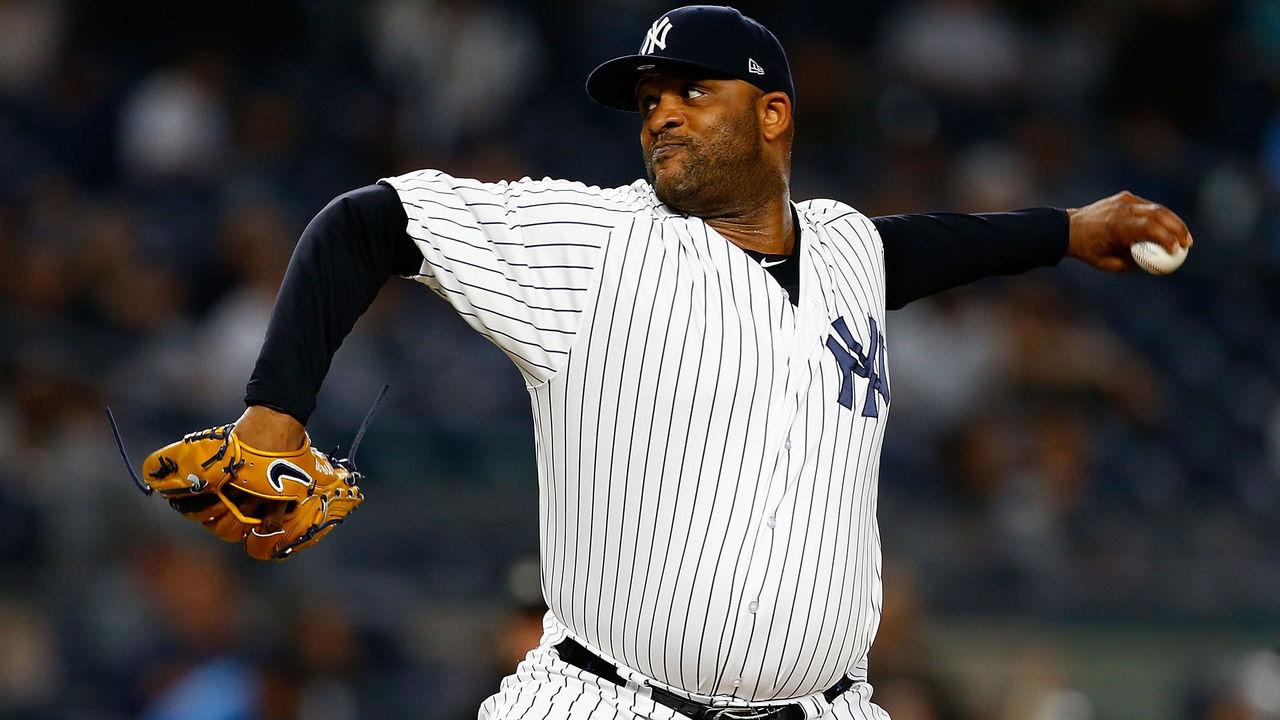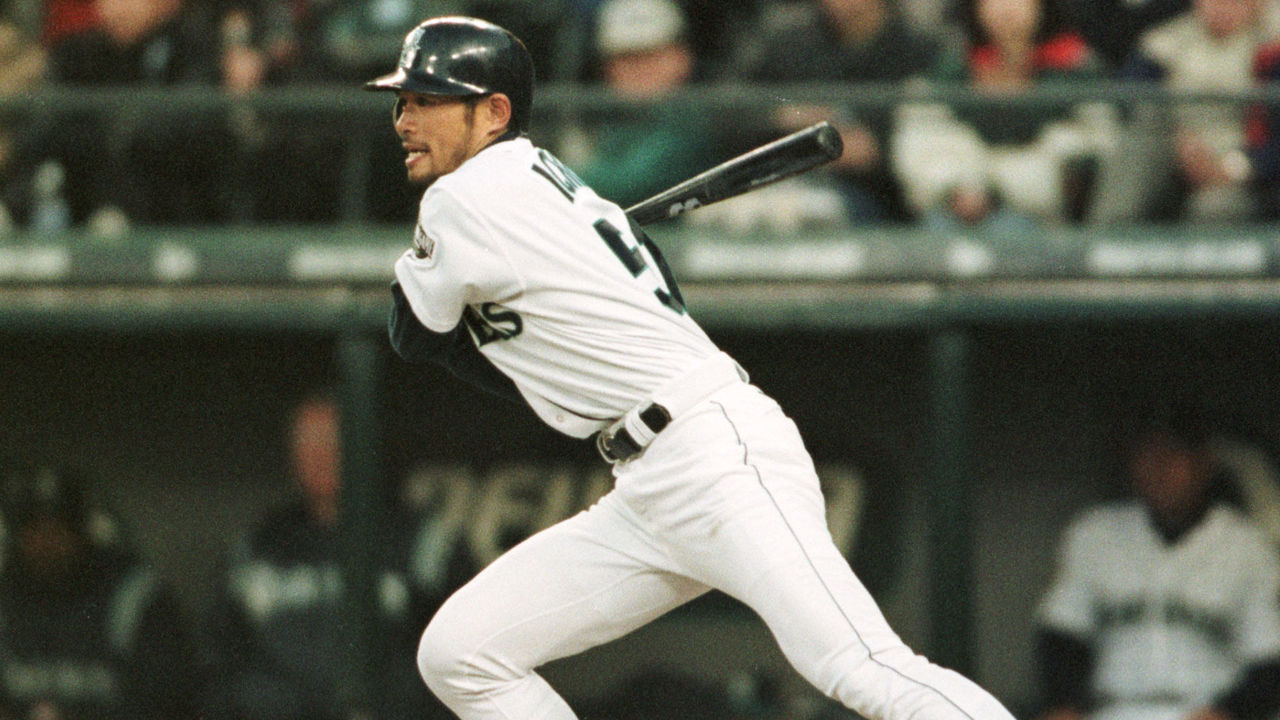2025 Baseball HOF preview: Ichiro, Sabathia ready to get their calls
With the Baseball Hall of Fame's class of 2025 announcement approaching, it's time to review this year's ballot. Our final installment looks at the two newcomers to the ballot. Both of these icons appear ready for phone calls Tuesday.
Note: All WAR figures from Baseball Reference unless otherwise noted.
CC Sabathia

Position: SP
Years: 2001-19
Teams: Cleveland, Brewers, Yankees
S-JAWS: 50.8 (55th at SP)
WAR: 62.3 (55th)
Year on ballot: 1st
| IP | W-L | ERA | WHIP | K |
|---|---|---|---|---|
| 3577.1 | 251-161 | 3.74 | 1.26 | 3093 |
Sabathia will likely go down as the last of his kind: a true ace who carried his teams to victory and ate innings like none of his peers. The southpaw's Hall of Fame case goes well beyond just being a workhorse, and momentum's on his side. Is Sabathia worthy of first-ballot induction?
Sabathia had multiple Division I football scholarship offers but spurned the gridiron for the mound after Cleveland drafted him 20th overall in 1998. Three years later, he was the 2001 AL Rookie of the Year runner-up while helping Cleveland to a division title.
He'd spend the next few seasons establishing his credentials as a workhorse, recording his first 200-inning season in 2002 and his first two All-Star nods in 2003 and '04 before moving into ace territory in 2006 (3.22 ERA, six complete games, and two shutouts). Sabathia broke out the following year, winning the AL Cy Young (19-7, 3.21, 209 Ks) and leading Cleveland to its first division title in six years.
When Cleveland fell out of contention quickly in 2008, Sabathia was dealt to Milwaukee for four prospects. The ensuing three-plus months were the best of his career. He made only 17 starts for the Brewers and still finished fifth in NL Cy Young voting by going 11-2 with a 1.65 ERA, 1.00 WHIP, seven complete games, and three shutouts. Sabathia carried the Brewers to October, making three starts on three days' rest down the stretch - capped by a four-hit complete game to end Milwaukee's 26-year postseason drought.
Sabathia was the big prize of the 2008-09 offseason, and the New York Yankees won the bidding with a seven-year, $161-million contract - the largest ever given to a pitcher at the time. The deal paid off quickly for both sides: Sabathia's 19 wins in 2009 led the majors, and he won ALCS MVP as the Yankees waltzed to their 27th World Series title.
Sabathia finished in the top four in Cy Young voting and was an All-Star during three of his first four campaigns with the Yankees. New York made the playoffs eight times in his 11 seasons with the club, although the team never advanced beyond the ALCS after '09.
In 2013, Sabathia entered the most difficult stretch of his career. After undergoing elbow surgery following the 2012 playoffs, his ERA spiked to 4.78 in '13. He lost significant weight that winter but made only eight starts in 2014 due to a knee issue. Sabathia helped the Yankees return to the playoffs in 2015 - albeit with a 4.73 ERA - but wasn't on the postseason roster. After earning the win to clinch the team's playoff berth on Oct. 1, he went on a drinking binge. Days later, he left the team and entered rehab for alcoholism.
A healthy and sober Sabathia bounced back in 2016, turning in his best season since 2012. Over his final four years, he continued to serve as a steady innings-eater at the back of the Yankees' rotation before retiring after the 2019 campaign. On April 30, 2019, Sabathia became the third left-hander to record 3,000 strikeouts.
As far as the traditional numbers go, Sabathia checks plenty of boxes. He's among 15 pitchers with 250 wins and 3,000 strikeouts, with all but three in the Hall of Fame. Sabathia retired with the third-most strikeouts among southpaws and reached 3,000 despite only three 200-K seasons and a lifetime 7.8 K/9 rate.
Sabathia threw more innings (3,577 1/3) than any other pitcher in the 21st century, finishing with eight 200-IP campaigns while surpassing 230 five times. He pitched a career-high 253 innings in 2008.
Some may quibble with Sabathia's 3.74 ERA, which would be the third-highest among Hall of Famers if elected. But that mark is offset by a 116 ERA+ that's better than multiple inductees', including Steve Carlton and Fergie Jenkins. Despite being below the HOF average in advanced stats such as JAWS and WAR, Sabathia is right alongside plenty of notable names in those categories who are inside the Hall and out. From 2006-12, only Roy Halladay had more WAR than Sabathia's 38.4.
Sabathia's career passes the smell test when you add his Cy Young award and playoff success with the Yankees. Whether he's worthy of first-ballot induction is another matter. However, he's headed in that direction, having earned 93.1% of the known vote.
Ichiro Suzuki

Position: RF
Years: 2001-19
Teams: Mariners, Yankees, Marlins
JAWS: 51.9 (17th at RF)
WAR: 60.0 (21st)
Year on ballot: 1st
| GP | BA | OPS | H | HR | RBI | SB |
|---|---|---|---|---|---|---|
| 2653 | .311 | .757 | 3089 | 117 | 780 | 509 |
In 2001, as steroid-fueled sluggers were sending baseballs into orbit, a scrawny Japanese outfielder crossed the Pacific and made the art of hitting cool again. Over his 28 professional seasons, 19 of which were in MLB, Suzuki left an indelible mark on baseball that spans continents and cultures. This is one of the easiest Hall of Fame cases in recent memory, so let's relive Suzuki's greatness to understand why he should be a unanimous choice.
Suzuki learned baseball from his father, Nobuyuki, who led him through rigorous daily drills from around age 7. According to a 2018 profile by ESPN's Wright Thompson, Nobuyuki's methods strained their relationship, and the two no longer speak. A two-way star in high school, Suzuki was drafted as an outfielder by the Pacific League's Orix BlueWave in 1991.
Suzuki split his first two years between NPB and Japan's minor leagues. He struggled in limited at-bats and fought with his manager over his unorthodox batting style and trademark leg kick. But in 1994, Orix's new skipper, Akira Ogi, embraced his young star's quirks, allowing Suzuki to take off. Ogi was also responsible for Suzuki wearing his first name on the back of his jersey instead of his common Japanese surname.
In 1994, his first full season, the 20-year-old Suzuki recorded the first 200-hit campaign in NPB history and collected his first of three consecutive Pacific League MVPs. From 1994-2000, he won seven straight batting titles, Gold Gloves, and Best Nine awards. Suzuki led the Blue Wave to Pacific League pennants in 1995 and '96 and a Japan Series title in the latter year.
Suzuki's success didn't go unnoticed in North America, particularly after he hit .380 in a 1998 exhibition series against MLB stars. Orix posted him for a move to MLB in 2000, and the Seattle Mariners signed him to a three-year contract after winning a blind bid.
Led by their new superstar, the 2001 Mariners won a record-tying 116 games. Suzuki hit .350 to win his first AL batting crown while leading the majors in hits (242), steals (56), and plate appearances (738). He also topped AL right fielders in total zone runs (15). In addition to his near-unanimous AL Rookie of the Year honor (Sabathia earned one vote), Suzuki received a Gold Glove, Silver Slugger, and AL MVP, joining Fred Lynn in 1975 as the second rookie to win MVP.
Suzuki hit .300 in each of his first 10 big-league seasons and went above .350 four times, including a career-high .372 to earn his second batting title in 2004. He led the league in hits seven times, and his 10 straight 200-hit campaigns are a record. Suzuki also claimed three Silver Sluggers and 10 Gold Gloves.
On Oct. 1, 2004, Suzuki singled for his 258th hit of the season, breaking George Sisler's 84-year-old single-season record. His final total of 262 may never be broken.
Suzuki started his first of 10 All-Star Games as a rookie and was the 2007 game's MVP after going 3-for-3 with an inside-the-park home run. His profane All-Star Game clubhouse speeches quickly entered Midsummer Classic lore, highlighting his great sense of humor (warning: video contains coarse language).
Suzuki's production declined quickly after 2010. The struggling Mariners traded him to the Yankees in July 2012 - he switched clubhouses in Seattle after the deal was announced - and he briefly rediscovered his old form down the stretch to help the Bronx Bombers reach the ALCS. Suzuki spent two more below-average seasons in New York, where his one big highlight was professional hit No. 4,000 (including his NPB totals) on Aug. 21, 2013. He's one of nine players with 4,000 verified professional hits.
At age 41, Suzuki joined the Marlins for three years as a fourth outfielder and pinch hitter, roles he seemed to embrace. He fulfilled a lifelong dream by pitching one inning in '15 and had 27 pinch-hits in 2017, one shy of the single-season record. On Aug. 7, 2016, Suzuki tripled at Coors Field for his 3,000th MLB hit, the first Asian-born member of the club.
A return to Seattle in 2018 lasted just 47 plate appearances before he was released, although he remained with the organization as a special assistant. When the Mariners opened their 2019 season at the Tokyo Dome, Suzuki was re-activated to finish his career at home. He went hitless, but the adoring crowd didn't care, as Japan sent its national hero off in style.
Despite not arriving in the majors until age 27, Suzuki retired as one of seven players with 3,000 hits and 500 steals. His numbers would've been even better had he come over earlier. Suzuki also has a litany of awards and records to enhance his case, not to mention his cultural impact.
The only question is whether he'll become the Hall of Fame's first unanimously-elected position player (writers have unanimously elected one pitcher, Mariano Rivera in 2019). Through 175 ballots in the tracker, he's batting 1.000, and here's hoping it stays that way. If anyone deserves to crack this ceiling, it's unquestionably Suzuki.